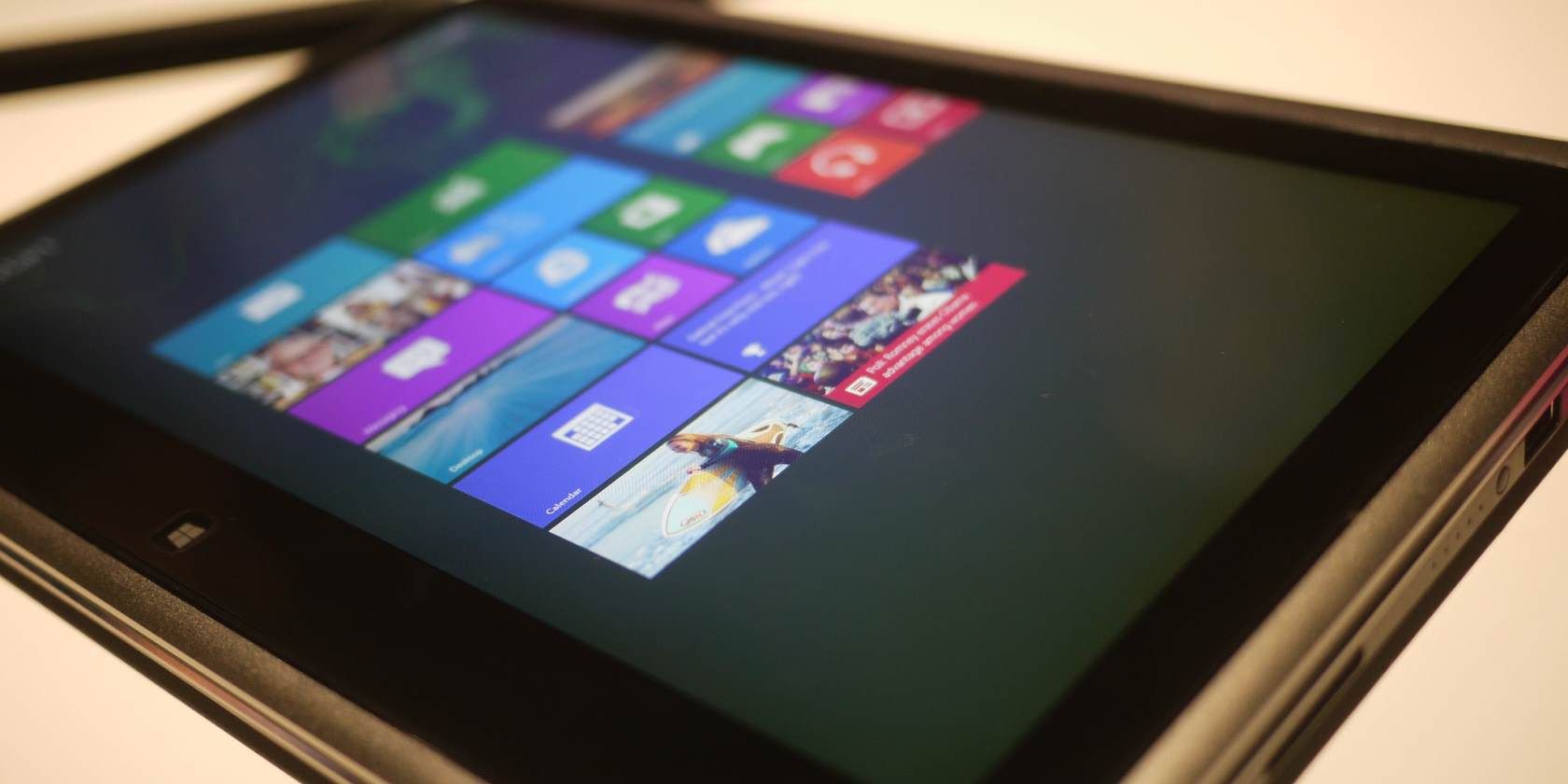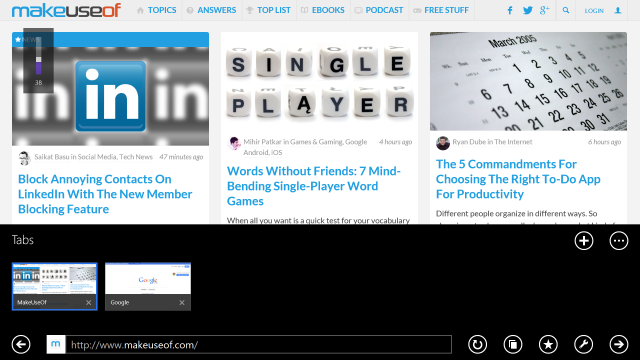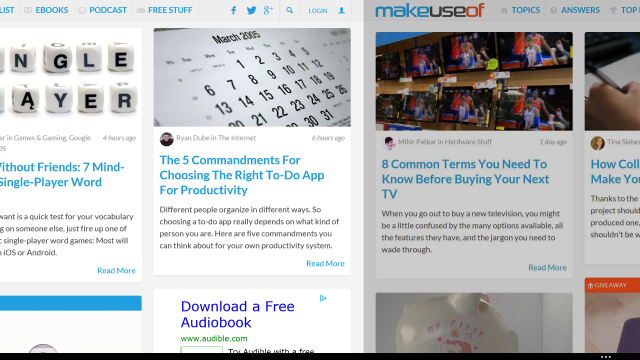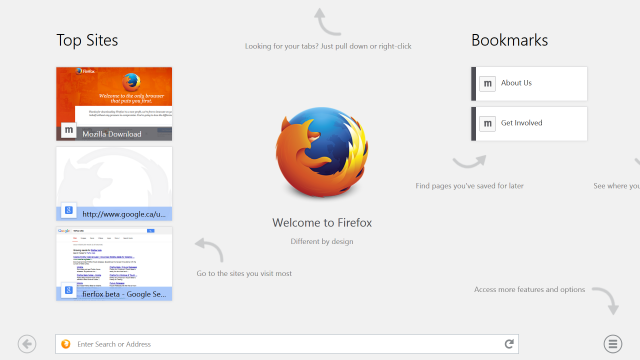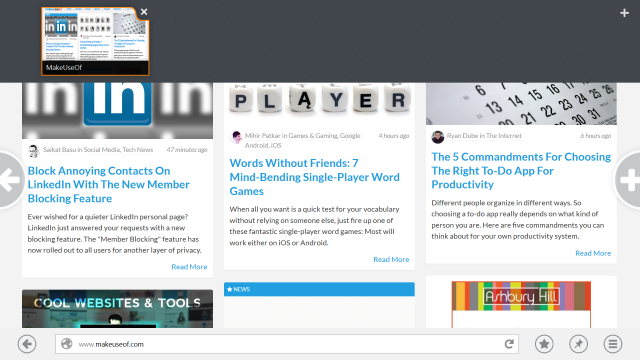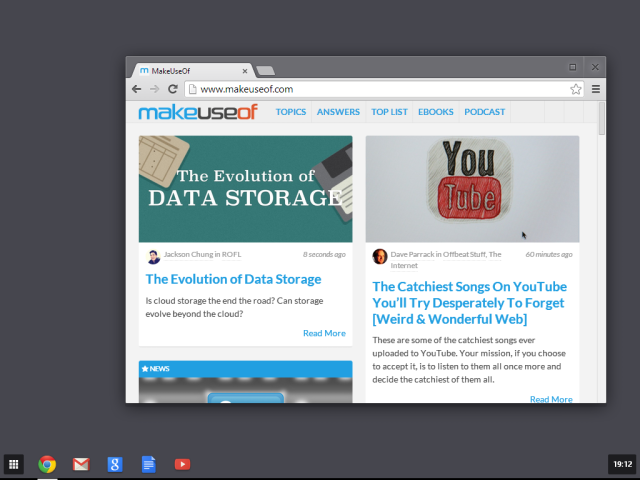When you're using your Windows 8.1 device as a tablet -- or just touching your laptop's screen -- the last thing you want is a desktop browser that hasn't been properly designed for touch screens. Internet Explorer, Firefox, and Chrome all have different interfaces specifically for Windows 8. There are even other browsers to choose from in the Windows Store.
Note that you can only access the "Windows 8-style" version of a browser if it's your default browser. In other words, if you want to use the touch version of Firefox, Firefox has to be your default browser. You won't be able to use the touch version of Internet Explorer until you set Internet Explorer as your default browser again.
Internet Explorer 11
Internet Explorer 11 is included with Windows 8.1. Internet Explorer 11 has come a long way since the days of Internet Explorer 6 on Windows XP. It's also come a long way from the Internet Explorer 10 included with the original release of Windows 8. For example, IE 11 now allows you to have a near unlimited amount of tabs, while IE 10 limited you to ten tabs.
Like most of Microsoft's new interface, IE 11 is designed for touch screens and full-screen, immersive content. That's why no interface bits are shown on screen while you browse. To view the tab bar, you can swipe up from the bottom and you'll see thumbnails representing your open tabs. You can also opt to always show a traditional tab bar from the settings charm, which is ideal if you regularly switch between tabs.
Internet Explorer 11 is a capable touch browser. It allows you to swipe right and go back a page or swipe left and go forward a page. IE even attempts to automatically guess the next page so you can swipe forward to it. For example, if you're reading a multiple-page article online, swiping the page to the left will load the second page in the article. On MakeUseOf's home page, this swipe will take you to the next page of articles.
If you come across a page that requires you hover your mouse cursor over something, you just have to long-press it with your finger and IE 11 will simulate a hover event. It's ideal for old pages that were designed for mice, not touch screens.
Mozilla Firefox
Mozilla now provides a touch-first, Windows 8-style version of Firefox. This new interface isn't stable yet, so you won't find it on the default version of Firefox. Currently you have to install the beta version of Firefox, launch it, click the Firefox menu button, and select Relaunch in Firefox for Windows 8 Touch.
Firefox offers a start page with links to your bookmarks and recently visited sites. Like Internet Explorer, it displays web pages in full-screen mode with no interface by default. You can swipe down from the top or up from the bottom to access the tab bar and navigation bar, which are separate in Firefox. The interface feels awfully similar to Internet Explorer 11, but it is Firefox. It's especially useful if you use Firefox on other computers or Android devices, as you can use Firefox Sync to sync your browser data between your devices.
Google Chrome
Google provides their own Windows 8-style version of Chrome, but it's not what you might expect. It's a full, Chrome OS-style desktop that allows you to use multiple Chrome windows and run Chrome apps, just as you would on a Chromebook. It's a different approach, but it may be worth a try. This interface gives you a way to run multiple Chrome browser windows and Chrome apps without the rest of the Windows desktop getting in the way. To use this feature, just click Chrome's menu button and select Relaunch Chrome in Windows 8 mode. If you don't see this option, Chrome currently doesn't support your device. For example, Chrome currently doesn't support the Surface Pro 2 and other devices with high-DPI displays.
Unlike Internet Explorer and Firefox, Google Chrome allows you to run browser add-ons in its Windows 8 interface. Chrome for Windows 8 actually doesn't feel as touch-optimized as Internet Explorer and Firefox do. Instead, Google has first transplanted their Chrome OS desktop onto Windows and will work on optimizing it for touch devices as they improve the experience for touch-enabled Chromebooks. If you just want a full-screen browser to use on a tablet, Chrome may not be ideal.
Skip the Other Browsers
As on Apple's iOS, some developers have chosen to make their own browsers by providing a different interface around the Internet Explorer web-page-rendering engine. Microsoft's Windows Store policies prohibited this when Windows 8 was released, but this rule appears to have been removed. Nevertheless, while there are many other browsers in the Windows Store, none of them stand out. They render web pages using the same engine Internet Explorer 11 uses and have similar interfaces. We don't see any reason to choose them over the other browsers here yet.
If you don't have a favorite browser, you'll probably want to use Internet Explorer as Microsoft put a lot of effort into making it work well on touch-based Windows 8 devices. If you already use Firefox or Chrome and want your Firefox browser data or Chrome apps and add-ons, Firefox and Chrome are both solid alternatives.
Image Credit: Dell Inc. on Flickr

